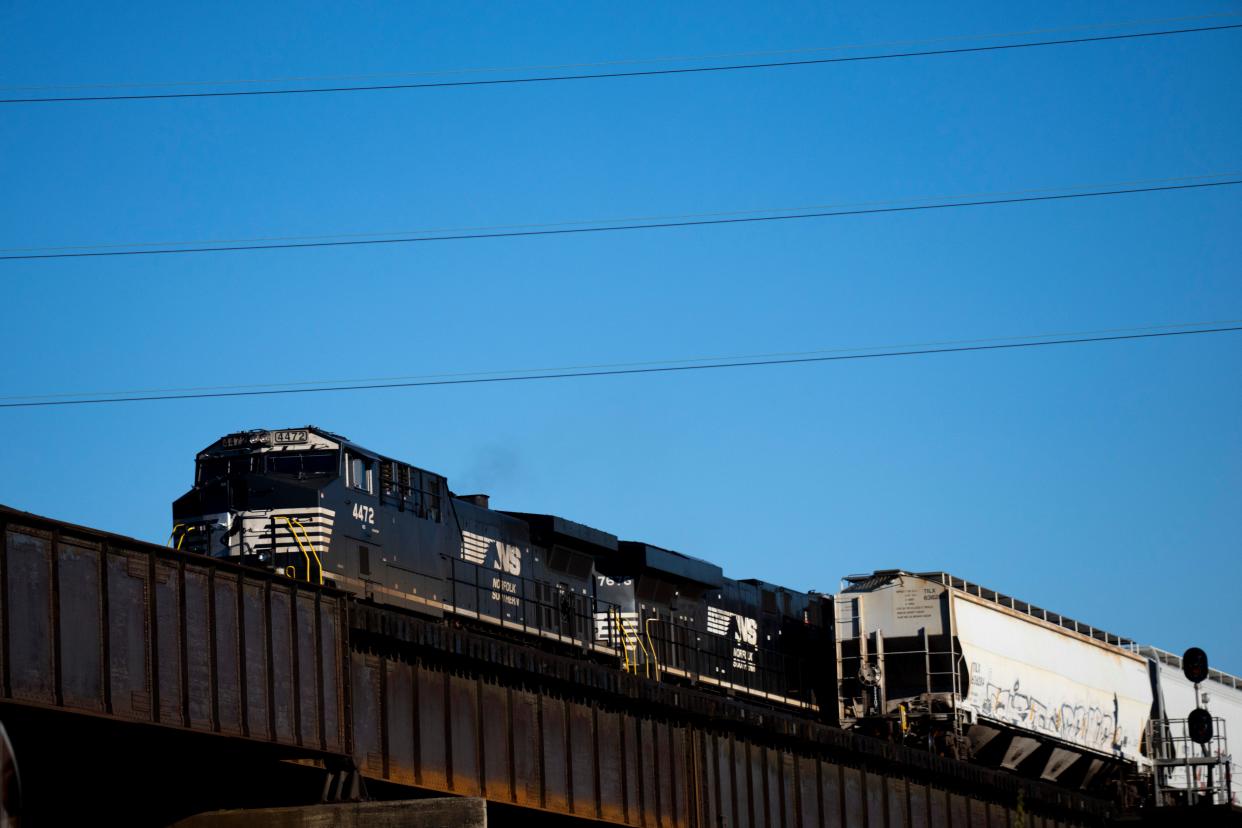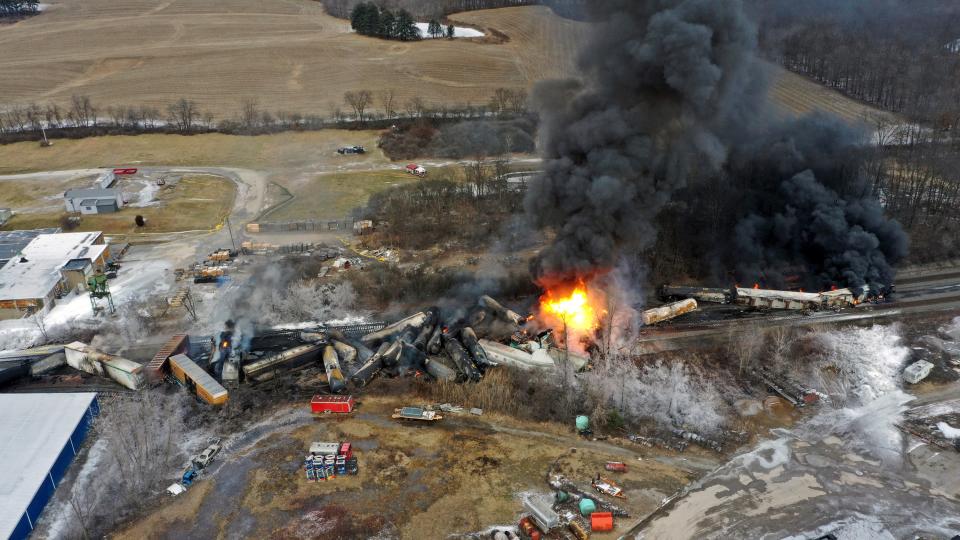Railroad sale: It's time to play hardball and demand a bigger lease payment | Opinion

Cincinnati voters will cast a vote in November that affects rail industry policy across America and into the future. The vote does not merely affect the city's financial state; it will set a clear precedent to either reign in the power of unaccountable rail monopolies, or grant them more power and industry consolidation.
The question that must be asked is this: Should the city of Cincinnati continue owning a profitable railroad corridor, or should it double down on its failing road infrastructure with a short-term influx of cash? In 20 years, the new road infrastructure will be old, and this time there will no longer be a profitable railroad asset to bail the city out.
Americans of all political affiliation understand that money spent by city, state and federal governments rarely flows toward their intended purposes, as large windfalls of cash have a history of being flaunted with impunity on whatever happens to be politically popular in the present. By selling this important railroad line, the city claims that other investment opportunities would result from the sale and bring additional incoming capital. Yet, they have failed to clarify where exactly they intend to invest this money.

A realistic dialogue about renewing this lease has not even occurred in a way that conveys the importance of this corridor to Norfolk Southern, and thus, the financial value Cincinnati holds. The renewed lease could be a windfall in itself, and written in a way that better reflects the true value of this corridor and protects the public from more rail industry consolidation and power. Norfolk Southern and its predecessor lines have leased Cincinnati's rail line to Chattanooga for well over 100 years due to its strategic and direct routing to terminals around the system. Without the Cincinnati Southern line, Norfolk Southern essentially loses its most important north-south connection, cutting off cities such as Birmingham, Atlanta and New Orleans from direct access to Cincinnati.
Norfolk Southern realistically will pay Cincinnati to lease this line regardless of cost because it would cripple their network not to do so. Why then is Norfolk Southern only paying $25 million per year to use it? As a comparison, the 10-mile-long Alameda Corridor in Los Angeles, which is a publicly owned rail line that multiple railroads pay rent to use collected $97 million from railroad user fees in 2022, according to their audited financial statements. This is only a 10-mile corridor. Norfolk Southern utilizes a whopping 337 miles of infrastructure owned by Cincinnati for only $25 million per year. This is a failure of Cincinnati leadership, and needs to be corrected, not just thrown out for a quick bailout of the city's roads and parks. This injustice is failing the taxpayers, who are now indirectly subsidizing a private railroad corporation, aiding and abetting the railroad to buy back its own stock instead of properly compensating Cincinnati as the owners of the line.
Enquirer editorial board: Time for Cincinnati to get out of the railroad business | Editorial
Opinion: Key questions must be answered before railroad sale
So what should Cincinnati do in response to the lease expiration and purchase offer of $1.6 billion? They should quit holding the hands of railroad executives and play hard ball. Threaten to close the line to Norfolk Southern. Offer to give other railroads trackage rights instead of Norfolk Southern. Class One railroads like Norfolk Southern have a long history of underpaying for the use of public infrastructure, while cutting labor, capital investments and safety, then directing those savings towards their share buyback programs at a rate of billions of dollars per year.
Norfolk Southern is currently engaged in a $10 billion share buyback as of March 2022, and this blatant destruction of capital should be used by the city in the negotiations for the new terms of use. The lease payment Cincinnati receives is truly a gross underpayment, and the city has the opportunity to correct this when the current lease expires. The $65 million per year proposed in negotiations by the city could be doubled and still be considered an underpayment because Norfolk Southern simply cannot lose access to this line and also remain competitive in the region. Cincinnati owns the keystone of the Norfolk Southern system.

But what if Cincinnati accepts the $1.6 billion sale price? Is it even a fair offer? Modern heavy duty rail lines currently cost between $2 million and $5 million per mile to build, but this really does not include the expense of grading, tunneling and the irreplaceable real estate held along these corridors. Rail corridors are largely a non-renewable resource due to the time and immense cost needed now to even begin construction. Years of environmental impact studies and right-of-way acquisitions, engineering and other costs, let alone grading, bridging, tunneling and construction of rail, ties, wiring signals and every other cost that goes into laying a new line. Norfolk Southern cannot realistically build a new line to replace the Cincinnati Southern for any cost, in 2023, and that makes the line a priceless asset that the city should not sell.
With any sale, Cincinnati loses the opportunity to control the corridor, and to profitably develop real estate adjacent to the corridor, or to build walkable, passenger train serviced developments which would bring in capital investment dollars to the city. All of this investment potential will be placed permanently into the hands of the same unaccountable railroad monopolies that left East Palestine, Ohio in ruins in pursuit of a lower operating ratio and greater returns for the large Wall Street institutions that own a majority of their shares.

From a logical perspective, any divestiture of the 337-mile rail line owned by Cincinnati would be a short-sighted, long-term financial blunder that will cost the taxpayers dearly − especially down the road when all of these new non-paying, "infrastructure" projects have long since cracked and decayed, and today's politicians have long since retired or died. The city will then be left with more unfunded liabilities to repair and no cash-flowing railroad asset to fall back on. If Cincinnati wants to be like every other crumbling, car-centric city in the country with no assets to fall back on, be sure to sell your cash-flowing railroad asset.
More: Don't rush to sell city-owned railroad | Opinion
But the largest consequence of selling the Cincinnati Southern will be felt nationwide during a time when Americans should be rethinking the unchecked power that large railroad monopolies have over our economy and interstate commerce. With the sale of this corridor, competition will be permanently closed from this line, further entrenching the anti-competitive environment seen in the U.S. railroad industry. Customers and businesses will be permanently locked into using only the services of Norfolk Southern along this corridor instead of building on the discussion of open access, publicly owned rail lines similar to our highway system.
The Cincinnati Southern has the opportunity to set the nationwide example of what our rail system could be in the future. Setting a standard that reverses the history of consolidation by Class One railroads, and instead holds for its citizenry a profitable, publicly owned rail asset, open to any railroad rather than one anti-competitive giant such as Norfolk Southern.
Michael Paul Lindsey is a former Union Pacific Railroad employee of 17 years and a follower of railroad history and policy.

This article originally appeared on Cincinnati Enquirer: It's time to play hardball and demand a bigger lease payment | Opinion

